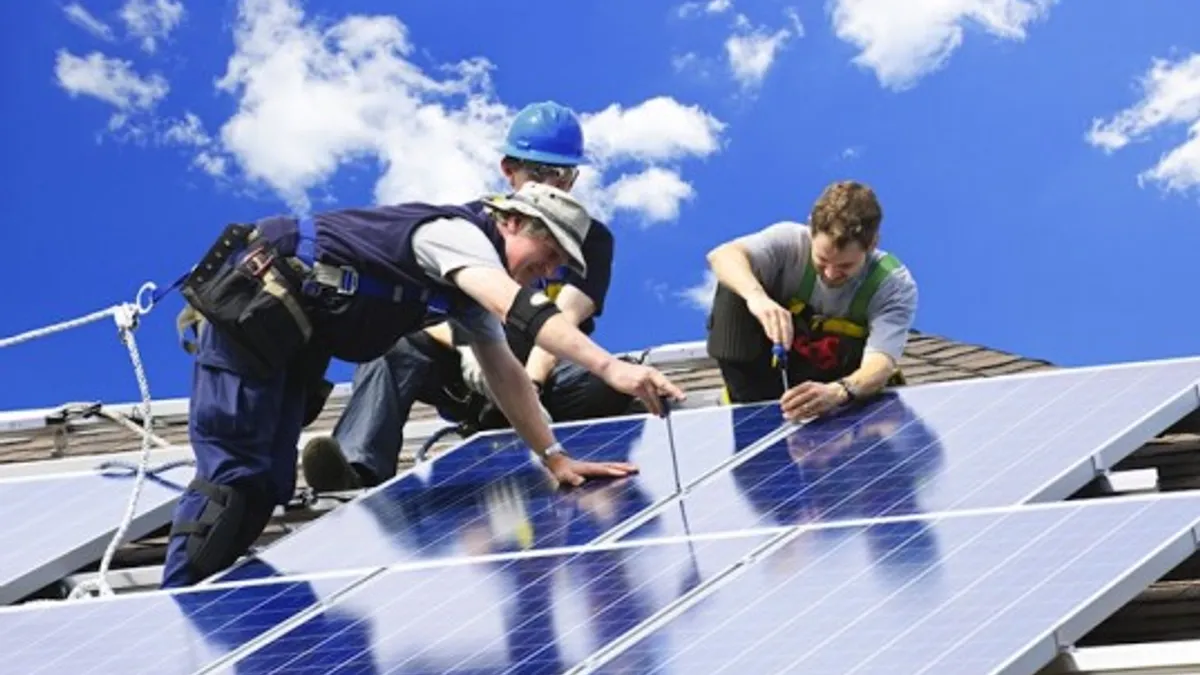Dive Brief:
- Hawaii's decision last year to end its retail rate net metering program has led to a contraction in the solar industry, and observers say more job losses are on the way, the Associated Press reports.
- Currently, installers appear to be working through a backlog of approved solar projects and those still in the queue which will still receive the ful retail rate for the energy sent back to the grid. But once those projects are completed, solar companies appear poised to pack up shop or shift to more lucrative energy installations.
- A Hawaii Circuit Court in January upheld state regulators' decision to replace the program. The Alliance for Solar Choice had filed a lawsuit, alleging the changes were made with insufficient notice or review, but the judge upheld the state's decision.
Dive Insight:
Hawaii's solar policy changes are having a predictable effect: More than half of install companies on the island have reduced or plan to reduce their workforce, the result of lower solar rates making rooftop systems less attractive.
According to the AP, 10 of Hawaii's 16 solar companies have indicated they will downsize, and its possible the trend will accelerate as solar projects still being considered for the full retail rate are approved and completed.
“Frankly, the industry is living off of these approvals,” Jae Kwak, chief financial officer for Haleakala Solar, told The Times. “As those get built, there is going to be more hardships. There is going to be more job losses.”
Earlier this month, Hawaiian Electric Co. said it was still reviewing 1,175 applications.
According to the Hawaii Public Utilities Commission, the net metering program was capped to protect the stability of the state's grid against Hawaii's uniquely high penetration of distributed solar. From here out, new rooftop solar users will have to choose from two other payback schemes.
The self-supply option – a non-export option – allows a limited amount of inadvertent energy exportation to the grid without any compensation. Residential customers who choose this option will have a minimum bill of $25, while small commercial customers will have a $50 minimum bill.
The grid-supply option will open the door for exporting excess energy to the grid for credits against customer bills so long as the exports benefit the electric system. While similar to net metering, this option does not credit customers at the retail rate. Instead, the new grid-supply programs credits customers at a fixed rate between $0.15/kWh to $0.28/kWh, depending on the island on which they are located.
Net metered systems have increased by over 60 times the cap established by the initial 1996 legislation that set up NEM for Hawaiian Electric customers, and program capacity now runs from 30% to more than half of system peak load, depending on the island. Nearly 20% of all customers of the Oahu and Maui subsidiary utilities have net metered distributed generation.
While some solar installation companies are downsizing or looking to move employees into other markets, others are working to remain afloat in the new marketspace. “They have just plain given up on selling,” Rolf Christ, CEO of R&R Solar Supply, told AP. “They just are installing what got approved. Some are leaving the state. Some are moving from (photovoltaic systems) to lighting contracting.”















